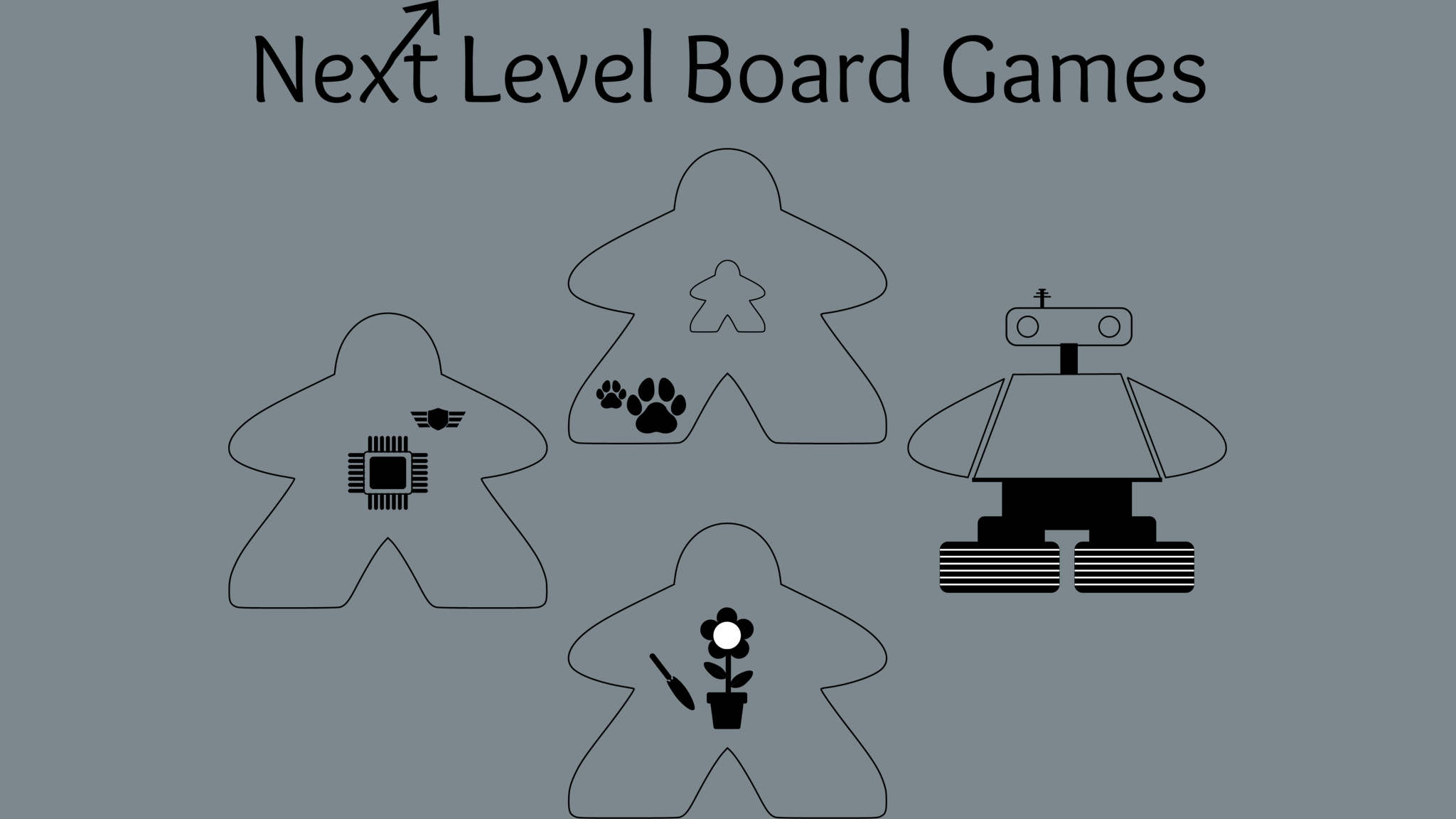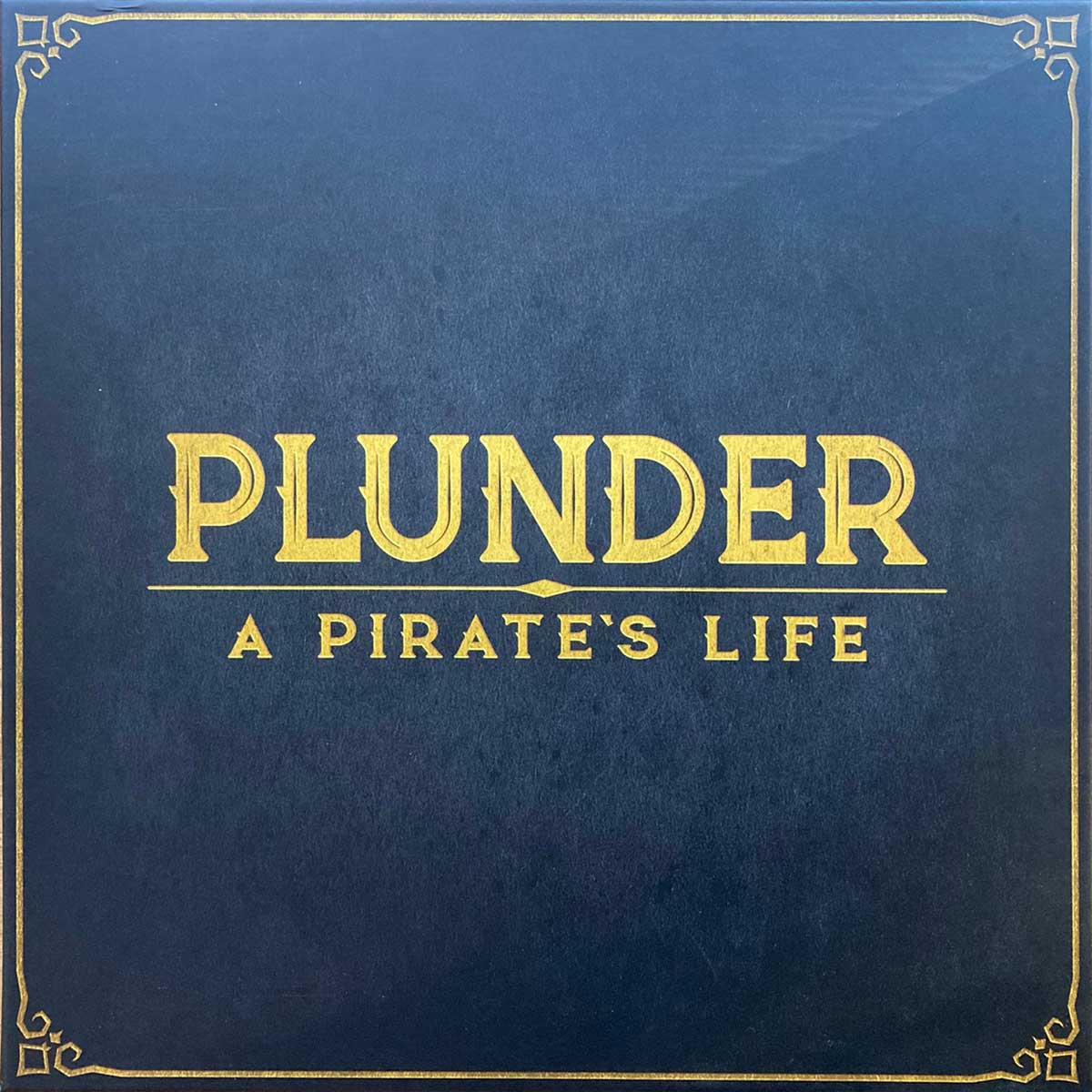Plunder: A Pirate's Life is a game published by Lost Boy Entertainment. The premise of this game is for players to take on the role of pirates searching for treasure and plundering islands and ships to earn plunder points. Plunder points can be gained by finding treasure, burying treasure, conquering islands, building ships, and sinking other players' ships. The first player to collect ten plunder points is declared the winner.
This post is broken into the following 3 sections, feel free to jump directly to one:
- General summary - consisting of information about overall enjoyment, theme, replayability, and upgrades
- Complexity - consisting of information about the rulebook, setup, player turns, and overall learning curve
- Player turns - consisting of game type, game flow, rule you are likely to miss, and favorite aspect
General Summary
Number of players we had: 3
Our play time (not including setup): 1 hour 50 minutes
Table size needed: Large (5' - 6') for 3+ players, 4'-5' for 2 players as there are less board tiles used
Overall enjoyment

Overall our group enjoys playing this game. The theme is great, there are lots of strategies that can be used to gain plunder points, and there is an unpredictability and randomness to the game that keeps players engaged at all times. Additionally, players are often part of other players' turns so there is little downtime between turns.
Plunder: A Pirate's Life is a great game for most player groups. While battling other players is part of the game play, this is not the only way to earn plunder points so players can focus their efforts on other tasks if this is not something they enjoy in game play. Also, even if you don't consider yourself a fan of the pirate theme, I think you will enjoy this game because of the ships, cards, and unpredictability.
The artwork and game pieces are nice quality. The game also comes with a great insert to keep everything in place. The randomness to how the game board is created ensures games look different each time. Also, each time a treasure is captured, a new treasure is randomly relocated on the board. The randomness ensures no player will know where the next one will appear. The storm is also randomly placed and moves at unpredictable times, creating great natural tension.
If we had to pick something that frustrated us about this game it would be that the font in the rule book is fairly small and thin which makes it a little hard to read.
Theme

The theme of this game is pirate based. The modular board tiles, ships, flags, sailor life pegs, treasure marks, treasure cards, resource cards and the dice all play perfectly into the theme. The three dice are each uniquely colored and we love them!
I cannot say enough about the ships - they are heavy and seem like a combination of plastic and rubber materials as they are solid but also have a bit of give to the texture. Also, the colors of the ships and matching flags are deep and rich. Lastly, the font used for all of the materials, including the rule book, matches the pirate theme.
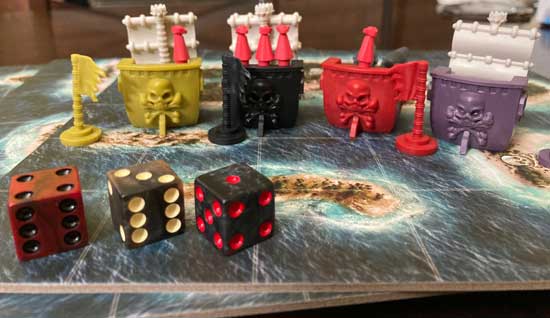
Replayability

There are a few things that increase the replayability of this game. First, the six board tiles are double-sided and are randomly placed together to build the board. Also, it is worth noting that when you only have two players, only four of the six board tiles will be used. Each side of a board tile is unique, and since they are set up randomly, it would take a long time for the final board to duplicate. This might not seem like a big thing, but there are definitely ways for the boards to line up that makes travel more challenging!
Second, the way the treasures are placed is completely random. Once a treasure has been found, a new treasure must be relocated to a new location on the board. This happens by spinning both compass spinners and placing the treasure marker on the location that corresponds with the letter and number spun. Sometimes a treasure will end up all the way across the board from you, and other times it will land right on top of you.
Lastly, whenever a player rolls a one on the sailing die, the "storm" is randomly relocated to a new location on the board. Anytime the storm moves it follows the same relocating process as placing a treasure. This means it can end up anywhere on the board. The nice thing about this is that it creates great game tension. Sailing to avoid the storm will only get you so far because you can never predict when the storm will move, or where it will move to.
Upgrades
I am not aware of any upgrades for this game, but it comes standard with a great insert that all the pieces fit well into. Additionally, the boats are fantastic quality, heavy with great coloring. Lastly, the player reference cards are super thick cardboard so they should be very durable.
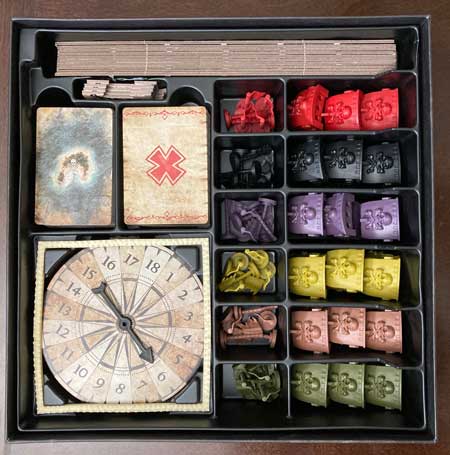
Complexity
Rule book
The rule book is very well organized and all aspects of game play are well explained with the rules being easy to follow. This includes images to demonstrate how the rules work. Additionally, the back page of the rule book includes a game overview with images! This is fairly unique and I really appreciate the effort that went into this. Lastly, the second to last page of the rule book includes a diagram of where each piece goes in the well-designed insert. The rule book is a great representation of how much care was taken in the making of this game.
Setup
Setting up the game is fairly easy and takes about 1o minutes. One thing that makes setup quicker is the organized insert, which keeps everything in its place and makes it easy to quickly locate the components needed for each game. Players create the game board with the board tiles and add the border pieces around the outside. Next players choose their ship color and take the appropriate reference guide, flags and starting life pegs. Once resource cards, treasure cards and plunder point cards are placed, players are ready to begin.
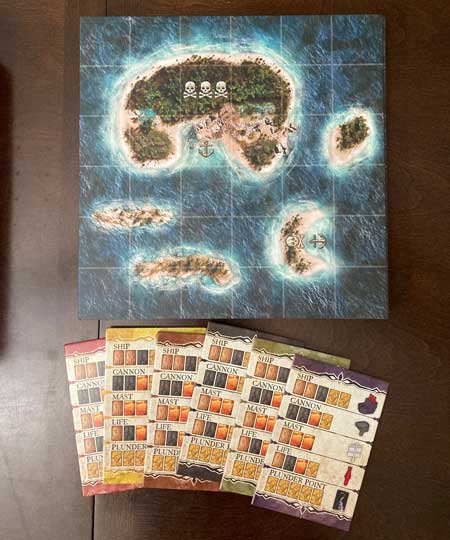
One thing I will mention is we found the spinners gave much more random results by placing them on top of small game trays that normally hold game tokens which allowed them to sit flat. If you don't do this, you often end up with really similar results and we found this less fun.
Turns
Turns go fairly quickly in this game. Each players' turn begins with drawing the number of random resource cards equal to the islands they have conquered and rolling the sailing die to move their ship(s). During the process of sailing, players may partake in any of the following actions:
- Attempting to conquer an island where a ship is ported. This includes islands owned by other players.
- Battling other ships you are orthogonally adjacent to.
- Trading with other players by being orthogonally adjacent to one of their ships, being in one of their ports, or having one of their ships ported to one of your conquered islands. Players can also trade with any player or choose to trade any two resources for one desired resource when docked at a Merchant island.
- Threatening to attack a player who is within battle range or whose island you are ported at, in hopes of getting resources from them for free or at a lower cost.
- Bribing another player not to attack one of your ships or an island you have conquered.
- Building a treaty with another player to prevent attacks and losses sometimes caused by Treasure cards.
- Collecting a treasure.
Since many of these actions affect other players, the time between player turns does not feel long. Lastly, at any time during their turns, players can build and/or upgrade their ships any number of times.
Overall learning curve
The overall learning curve for this game is not very high. Game play is not overly complicated and many of the rules that exist for one action operate the same way for all similar actions. For example, the position required for ships is the same for trading, bribing, threatening, and battling. This makes it easier to remember ship placement, etc.
Player Turns
Play type
Plunder: A Pirate's Life is a symmetrical, dice rolling and modular board game of area majority and trading. Players can fight against each other to try and sink one another's ships and gain plunder points, or they can focus on gathering treasure or conquering additional islands. Conquering islands increases the number of resource cards players draw at the beginning of each turn, which in turn means they can upgrade their ships and build ships faster.
Game flow
The flow of this game is fairly fast. Even when players are not actively taking a turn, other players' turns often affect them. This might be because a player decides they want to go to battle, try to conquer one of your islands, trade with you, or they gathered a treasure whose result affects you.
Rule you are likely to forget/miss
The one rule you are likely to forget or miss is to gather random resource cards at the beginning of your turn equal to the number of islands you have conquered. In the beginning it can take a while to conquer additional islands and it is easy to get into the habit of drawing only one card.
Favorite aspect
Our favorite aspect of this game is the random way new treasures are relocated onto the board. This means every player has the same chance at being far from or close to a new treasure. Additionally, while the idea of treasure cards is to acquire resources, sometimes they backfire on the person collecting and they often affect other players. This keeps the game interesting!
Although I have already mentioned that the boats and the game insert are both amazing, it is worth saying again! Plunder: A Pirate's Life is a fun and engaging game for most player groups. This game has ways to gain points even if you have players who do not like to go after other players, though that is sort of the point of the game!
